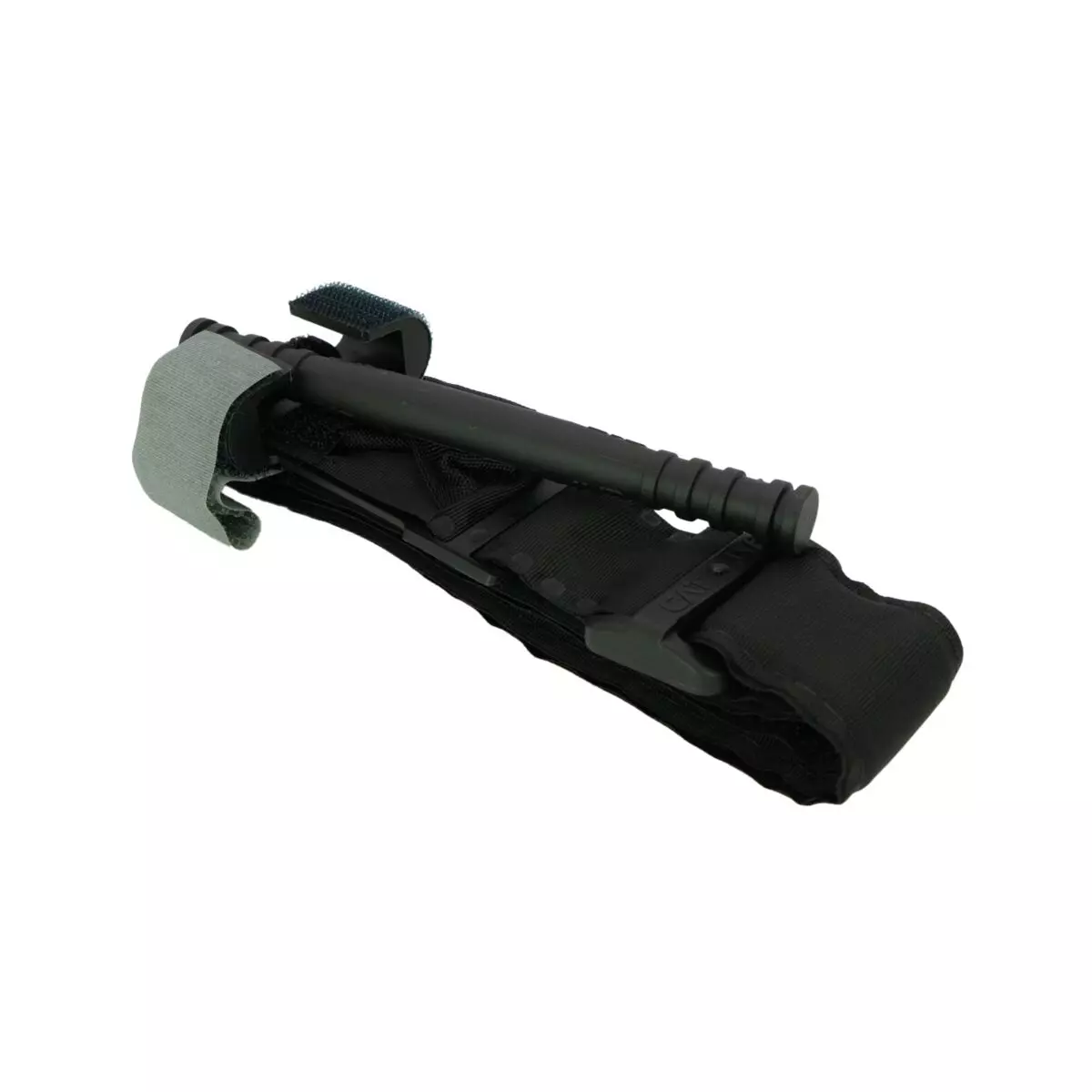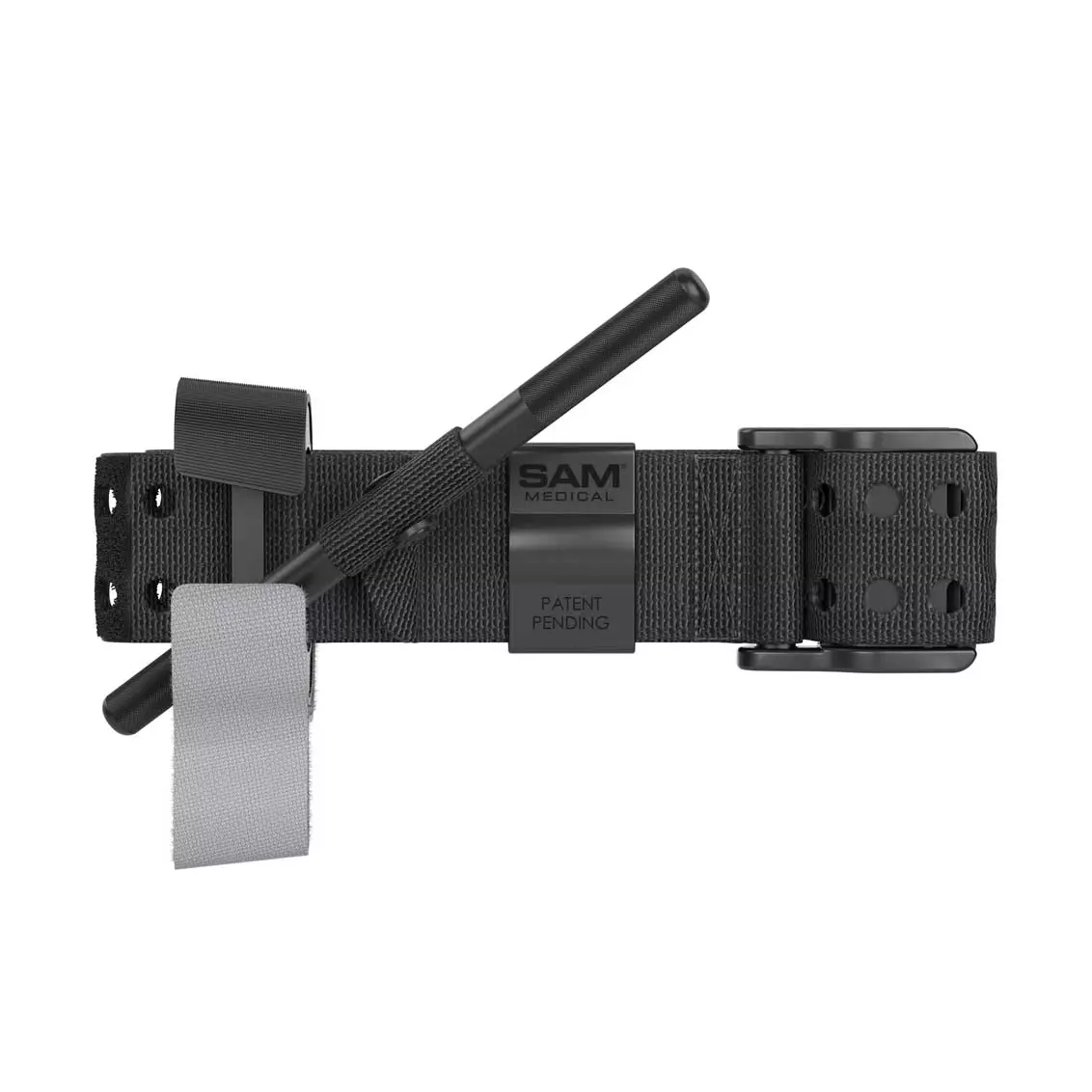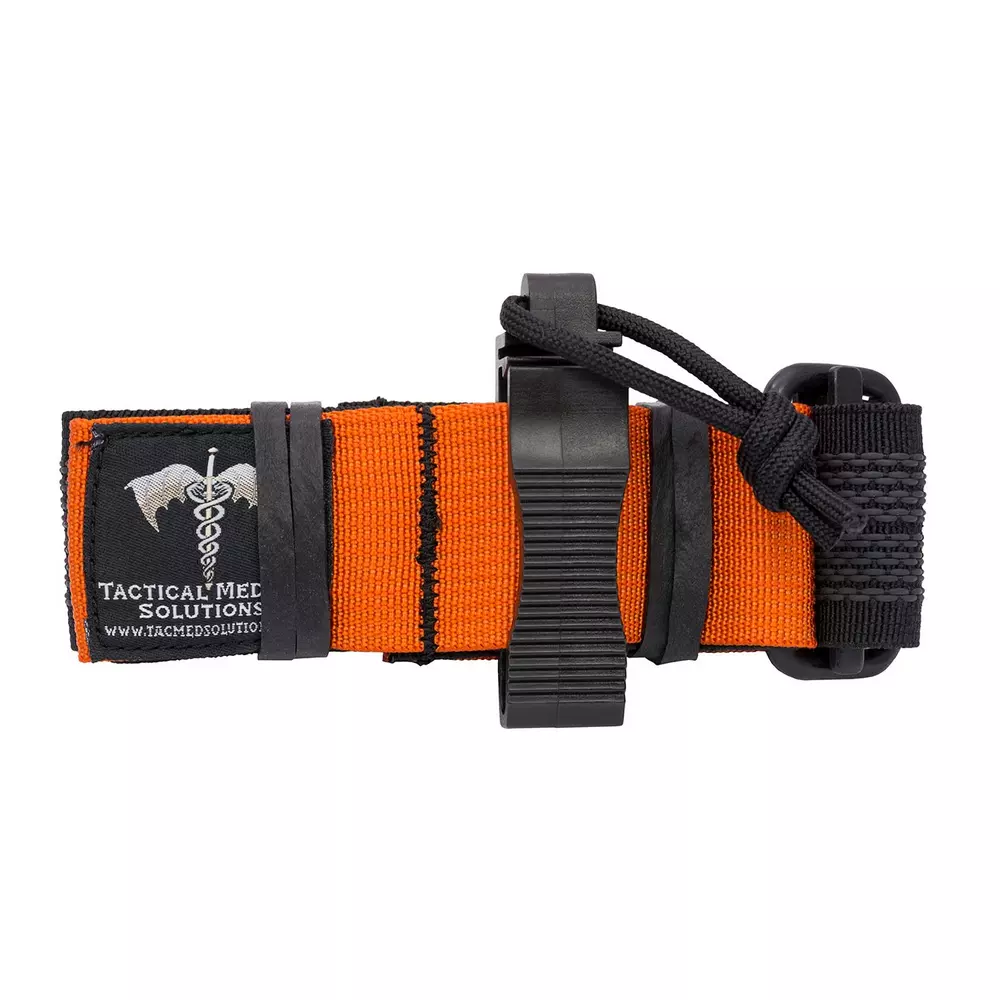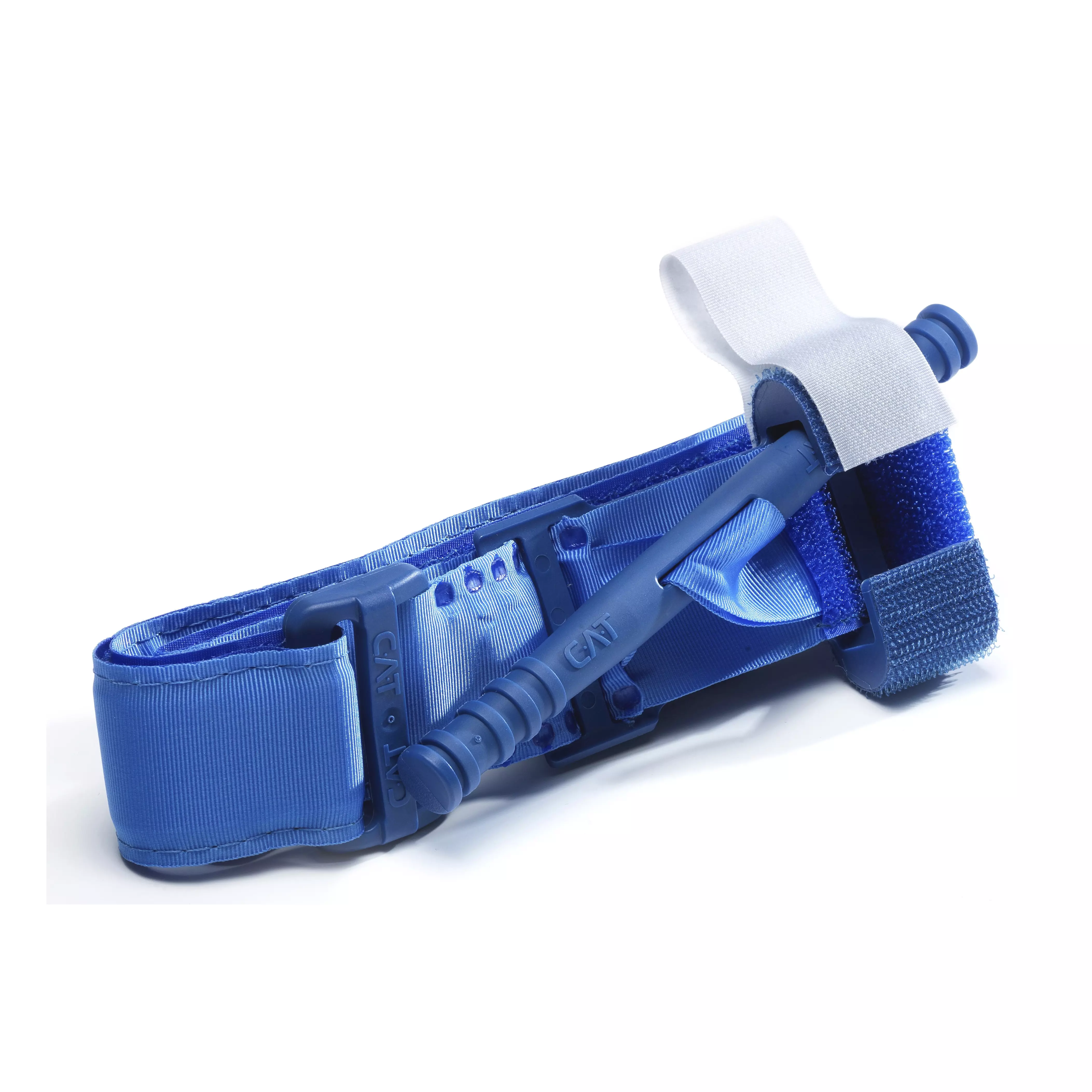The correct use of tourniquets
In this guide, we explain what a tourniquet is, when and how it is used and provide you with valuable tips on the subject of tourniquets and heavy bleeding.
What is a tourniquet?
A tourniquet (also known as a tourniquet) is a ligature system that can be used for injuries with severe bleeding. With the help of the tourniquet, extremities can be tied off to stop the arterial blood supply and reduce heavy blood loss - and thus prevent haemorrhaging.
The
tourniquet was originally established in 1996, primarily in the field of emergency medicine for
military operations. The tourniquet was also included in the principles of "Tactical
Combat Casualty Care" (TCCC) as an instrument for
treating life-threatening bleeding in the extremities.
Nowadays, however, tourniquets are also used for purposes other than military
operations. They are also part of the
standard equipment of rescue or
emergency services as well as particularly vulnerable occupational fields.
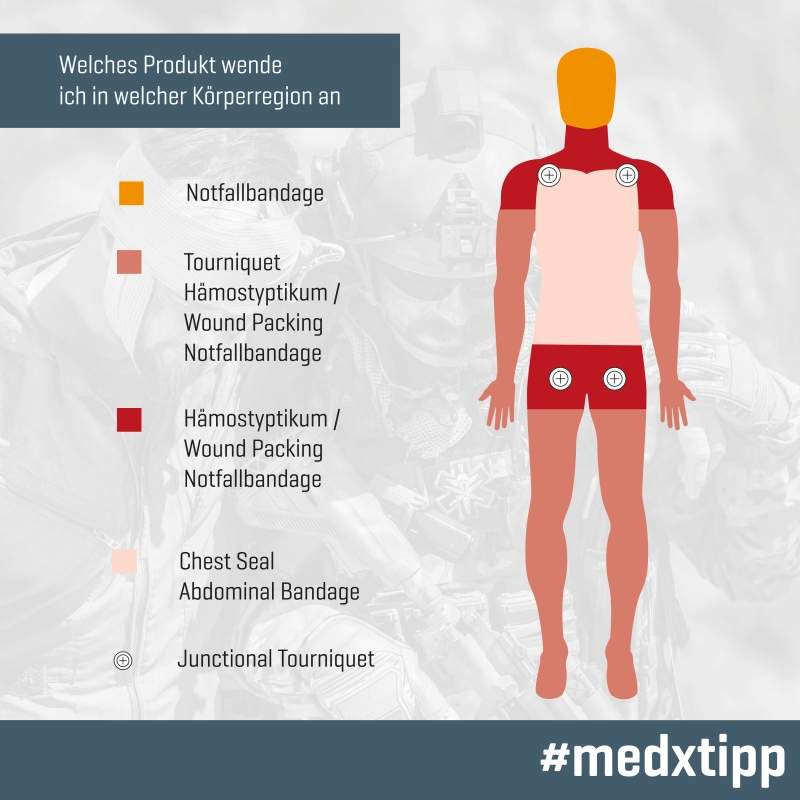
When should a tourniquet be used?
Not every severe haemorrhage immediately requires the use of a tourniquet . Below we have summarised some situations, in which the use of a tourniquet is unavoidable.
- Severe bleeding on an extremity with simultaneous respiratory and circulatory problems.
- Haemostasis cannot be achieved with a tourniquet.
- Amputation injury proximal (towards the trunk or the centre of the body) of the wrist or foot.
- Severe bleeding on the extremities in a dangerous situation or under time pressure.
A tourniquet must always be used if the injury to the limb causes life-threatening bleeding . The diagram shows the areas of the body in which a tourniquet can be used.
How is a mechanical tourniquet applied?
- Two-handed application:
- Unfasten the strap of the CAT ® and pull it out of the bar buckle.
- Place the CAT ® directly on the skin above the haemorrhage in the direction of the torso.
- Place the strap around the injured limb and pass the end through the bar buckle.
- One-handed Application:
- Unfold the CAT ® so that the strap forms an O-shaped loop.
- Position the CAT ® above the haemorrhage in the direction of the torso.
- To do this, guide the injured limb through the O-shaped loop of the Velcro strap.
- Pull
the strap so tight that it is not possible to get three fingertips
between the CAT ® and the limb. Firmly
the Velcro surfaces together to prevent the
strap from loosening.
- Rotate the toggle until the bleeding stops and the pulse can no longer be felt below the wound site.
- Secure
the toggle in the clamping hook. Check the bleeding and the
distal pulse (further away from the torso or centre of the body) again.
If the bleeding has not stopped and the pulse is still
palpable, increase the pressure of the tourniquet - by screwing the toggle
in further - or apply a second CAT ® above the first
and check its effectiveness again.
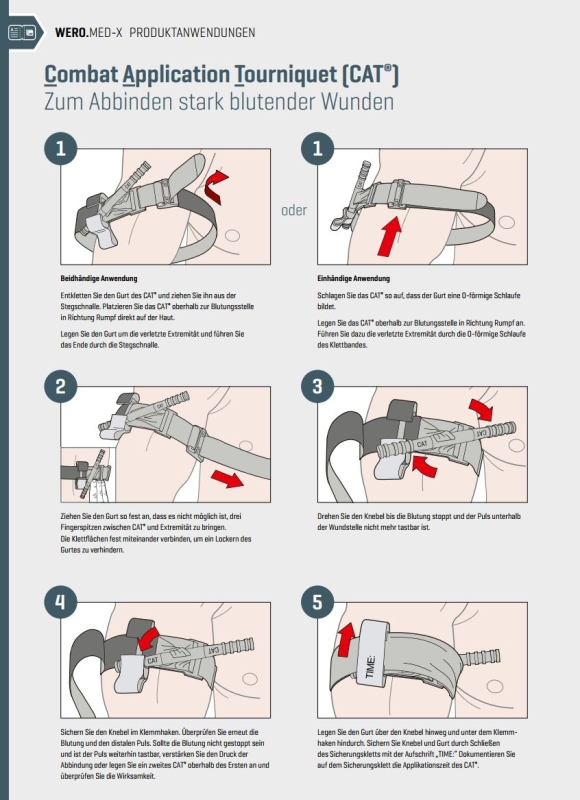
Place the strap over the toggle and under the clamping hook. Secure the toggle and strap by closing the securing Velcro labelled "TIME:" Document the application time of the CAT® on the securing Velcro.
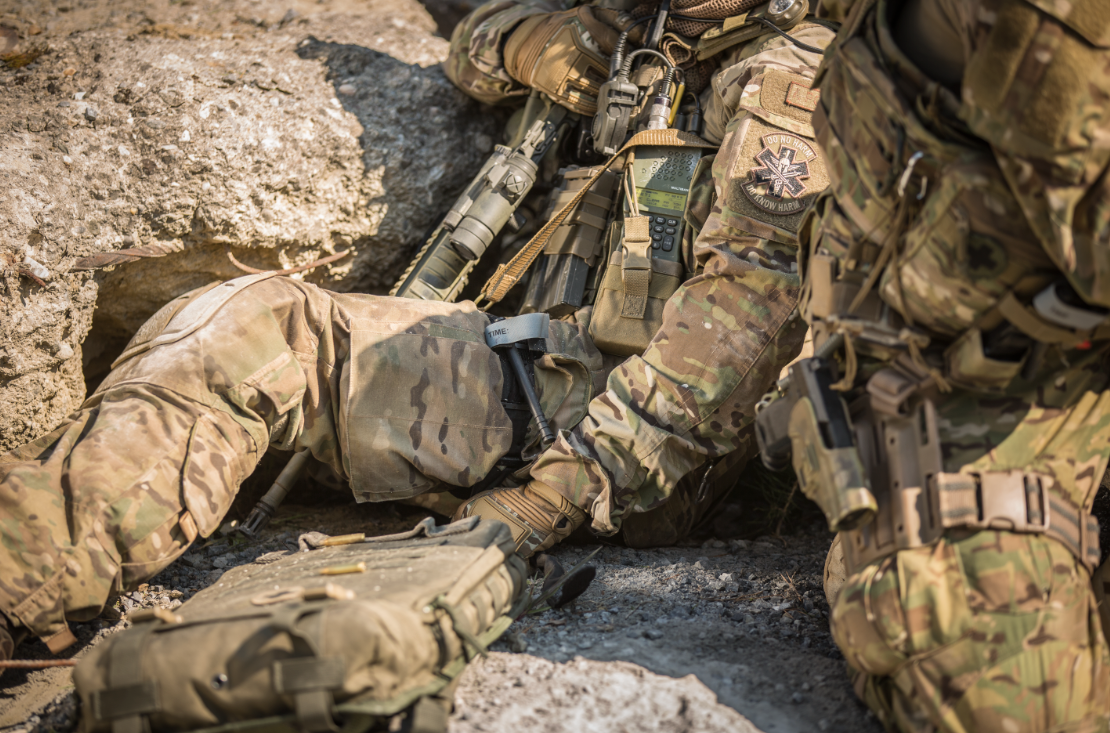
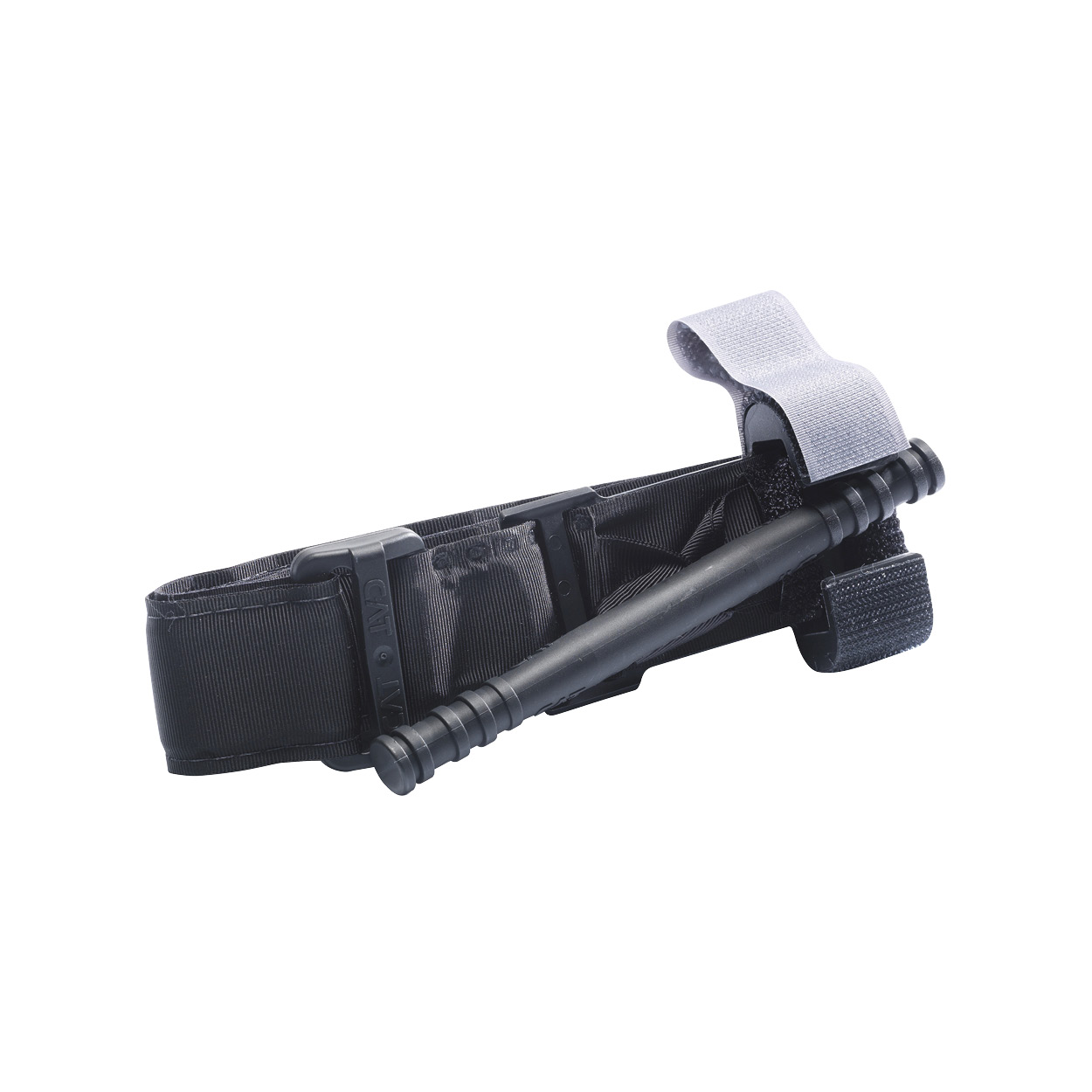
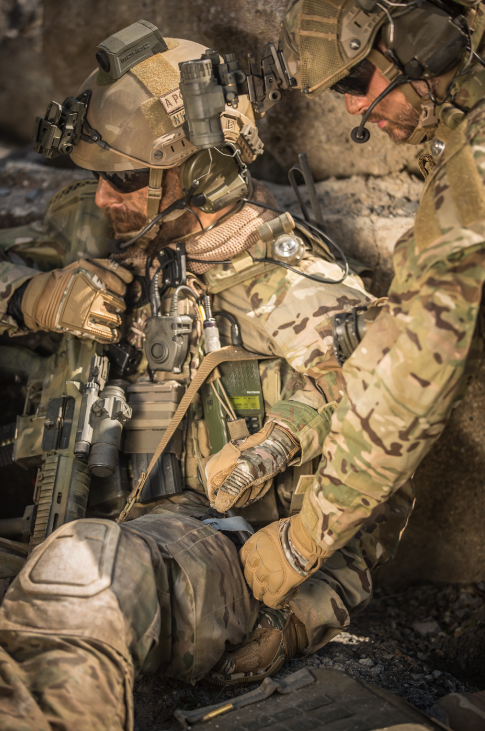
What is the maximum length of time the tourniquet can be used?
The tourniquet applied must ultimately be strong enough to squeeze the arteries close to the bone. However, the blood must not be squeezed for too long, as this can lead to fatal consequences - such as damage to blood vessels, nerves or muscles. It is therefore essential that the start of the tourniquet application is noted on the tourniquet so that this information is available for further treatment. The use of a tourniquet is only a temporary measure in every case. In most cases, the tourniquet is necessary until further surgical treatment of the injury is possible.
However, it is perfectly possible to leave the tourniquet in place for up to two hours without any consequences. For example, tourniquets are ideal for bridging the gap between initial treatment and surgical treatment for patients who are bleeding heavily. However, it should be checked at regular intervals whether the tourniquet is still effective and fulfils its purpose - if necessary, the toggle should be retightened.
How can the purchase of counterfeit products be avoided?
Unfortunately, even with tourniquets, it is almost impossible to avoid counterfeits being brought onto the market. The problem here is that counterfeit products are often subject to little or no quality control, which is why the products can be defective and unreliable , which can of course have fatal consequences, especially for first aid products!
Our tip: Only buy your tourniquets and first aid products from trustworthy retailers or online shops with traceable supply chains. If you do receive a product that seems questionable - whether due to missing outer packaging, visibly inferior quality or for other reasons - contact an expert at if in doubt. They can check whether the product in question is an original or a counterfeit.
Who is authorised to use tourniquets?
In principle, anyone can own and use tourniquets - even laypeople should not shy away from using them in an emergency. Because as soon as use is necessary, it can be a matter of life or death. The use of a tourniquet can entail risks - such as damage caused by tying the tourniquet too long or too tightly or tying it in the wrong place. In any case, however, the chances of survival of a severely bleeding wounded person increase many times over if a tourniquet is applied.
What brands of tourniquets are available?
Our range only includes tourniquets of the best quality, including the CAT ®, SWAT - T and SAM ® brands. Even if the application may differ slightly in parts, all products convince through best handling and quality.
Do you have any questions about our products? Then please visit the relevant product pages or contact us directly by phone or email at . We look forward to helping you!
Buy original tourniquets from WERO
Available, delivery time: 1-3 days
Available, delivery time: 1-3 days
Available in 30 days, delivery time 1-3 days
Available in 50 days, delivery time 1-3 days

